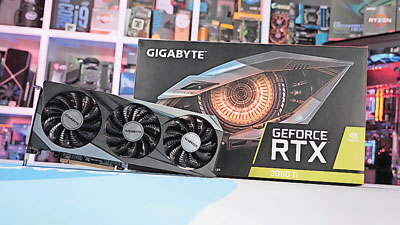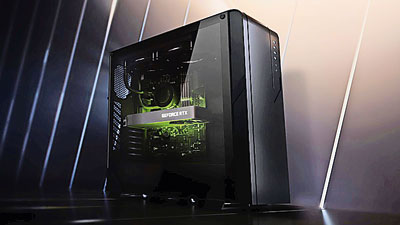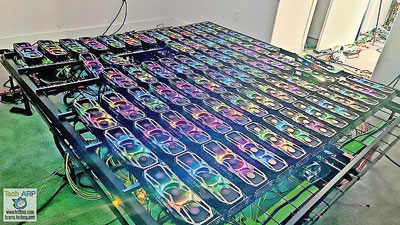Nvidia’s new RTX 3060 is here
View(s):
The RTX 3060 marks the first time that NVIDIA won’t have a Founders Edition for the RTX 30- Series (Image Credits: TechSpot)
Following the launch of the RTX 3060 Ti, NVIDIA recently announced its younger sibling, the GeForce RTX 3060. Priced at $329, the RTX 3060 comes from the same Ampere architecture as its elder siblings. This also means the card has 2nd generation RT and 3rd gen Tensor cores. The RTX 3060 packs 3,584 cores, a base clock of 1.32GHz that can boost upto 1.78GHz, 12GB of GDDR6 memory and a 192-bit memory bus.
In terms of performance, the new RTX 3060 trades blows with the RTX 2060 and can come close to an RTX 2060 Super. Give it proper cooling, and the RTX 3060 just might match the RTX 2070 if 3rd party AIBs (Add-in Boards) work out the thermals so that the card can reach its ideal boost clocks and perhaps a bit more when overclocked. While all this is good, it’s questionable as to why Nvidia opted to pair 12GB of VRAM on a 192-bit bus interface. Why, you ask? Simply because at higher resolutions, the RTX 3060 will be bottlenecked by that very same bus as it doesn’t have fast enough bandwidth to fully utilize the 12GB of VRAM. To put it in layman’s terms, think of sending a gallon of water through a pipe that is only half an inch in diameter. It will eventually use up all the water, but it could be done much faster with a broader pipe.
Interestingly the RTX 3060 marks the first RTX 30-series cards to no have a Founders Edition. So when the RTX 3060 launches on the 25th of February, they will be composed entirely of AIB cards (basically cards from brands such as Asus, Gigabyte and MSI). This also means that while there will be reference spec RTX 3060s available, there will also be a number of higher clocked cards (obviously selling for an equally high price) as well.

(The RTX 3060 aims to be the new Ray Tracing kid on the block (Image Credits: Android Authority)
The RTX 3060 also launched with a twist, especially for those involved in cryptocurrency mining. In case you missed it, the Covid-19 pandemic meant that demand for graphics cards was high, there was inadequate supply for consumers. This in turn led to scalpers buying whatever stocks remained of graphics cards, only to resell them at ridiculously high prices. In addition to this, cryptocurrency also reared its head, creating an even greater demand for already dwindling supply of graphics cards.
NVIDIA has taken note of this and enforced some strict countermeasures to ensure that the new RTX 3060 cards are reserved for gamers/content creators. These include a driver level lock that will cripple the hash rate by half, if an Ethereum mining algorithm is detected. NVIDIA shared that “end users cannot remove the hash limiter from the driver. There is a secure handshake between the driver, the RTX 3060 silicon, and the BIOS (firmware) that prevents removal of the hash rate limiter.”
We’re not entirely sure if this will work or if someone in the mining community will find a workaround, but it’s an interesting state of development to keep an eye on. The new driver also could mean that because the RTX 3060 is now less desirable for mining, gamers/consumers may actually be able to get their hands on the cards.
In terms of pricing, even though the RTX 3060 launched at a MSRP of $329, you’re highly unlikely to find it at that price. In fact, cards from companies such as Gigabyte and Asus are retailing for upwards for $450. Convert this to local currency and you’re looking at spending around LKR 135,000/- for a card that at most would have been around LKR 80,000/-. In fact, when the cards actually launched on the 25th of February, their stock status immediately changed from “Coming Soon” to “Unavailable” or “Out of Stock”. There was no hint of the card being “In stock”.
The semiconductor shortage that is responsible for all this is due to 3 main factors: The COVID-19 pandemic, limited manufacturing, and of course the US-China Trade war. When will the semiconductor shortage end, you ask? Well, we can’t really say. It might be a year, maybe two, or maybe even more. But whatever the case may be, if you’re looking to build a new PC, you might be out of luck.

Amidst global shortages due to COVID-19, graphics cards also saw a severe shortage due to a resurgence in cryptocurrency mining. Seen here is one such mining setup consisting of 78 RTX 3080 graphics cards (Image Credits: Tech ARP)



